A sudden rustle in the dark—your heart skips a beat. But then, stepping forward with unwavering confidence, your dog’s powerful frame and alert eyes reassure you. Muscular guard dog breeds are more than just pets—they’re built for protection, loyalty, and strength.
Bred originally for guarding livestock, pulling carts, and hunting large game, a combination of power and intelligence makes them ideal protectors. Their naturally muscular build gives them the stamina and strength to face real threats, but it’s their loyalty and trainability that truly set them apart.
While some breeds are more instinctively protective, training plays a crucial role in shaping a reliable guard dog. Even if a dog looks intimidating, without proper guidance, they might not act as protectively as expected. In this guide, we’ll explore the most impressive muscular dog breeds known for their fearless nature, bravery, devotion, and raw strength.
Muscular Guard Dog Breeds
1. Cane Corso
The Cane Corso, often referred to as the Italian Mastiff, is a large and muscular breed known for its loyal heart and imposing presence. Weighing over 100 pounds and standing up to 28 inches tall at the shoulders, this breed is as strong as it is devoted. With their expressive faces, broad heads, and confident stances, Cane Corsos command attention without even trying.
Historically bred for guarding property, pulling carts, and serving alongside soldiers in ancient Rome, the Cane Corso has always had a job to do. Its name, derived from Latin, means “bodyguard-dog,” and the title fits perfectly.
Though naturally protective, these dogs form deep bonds with their families and thrive when given purpose, structure, and space—ideally, a home with a yard.
With their expressive faces, broad heads, and commanding presence, Cane Corsos command attention without even trying.
While affectionate with their people, Cane Corsos tend to be wary of strangers and may not tolerate other dogs well, especially of the same sex. Socialization from an early age is key. Their serious nature and impressive strength make them better suited for experienced owners rather than households with small children or seniors.
One of their most notable traits? An incredibly strong bite force—estimated at around 700 PSI—places them among the most powerful breeds. Yet behind that intimidating frame is a calm, confident companion that doesn’t seek attention but will fiercely protect those it loves.
Cane Corsos aren’t for everyone, but for the right owner, they’re an exceptionally loyal, loving guardian you can count on.
2. Rottweiler
The Rottweiler is a powerful working dog with roots tracing back to ancient Roman drover dogs. After being left behind in what is now Rottweiler, Germany, they earned their reputation herding livestock and protecting butchers on trading routes—so much so, they were affectionately dubbed “the Butcher’s Dog.”
Though the breed nearly disappeared in the 19th century with the rise of railroads, it made a strong comeback in the 20th century, finding new purpose in police work, military service, and even therapy roles.
Stocky and muscular with a short black coat and signature tan markings, Rottweilers exude strength and confidence. Their protective instincts run deep, making them natural guard dogs. Though slightly shorter than other protection breeds, their bite force—around 328 PSI—is among the strongest.
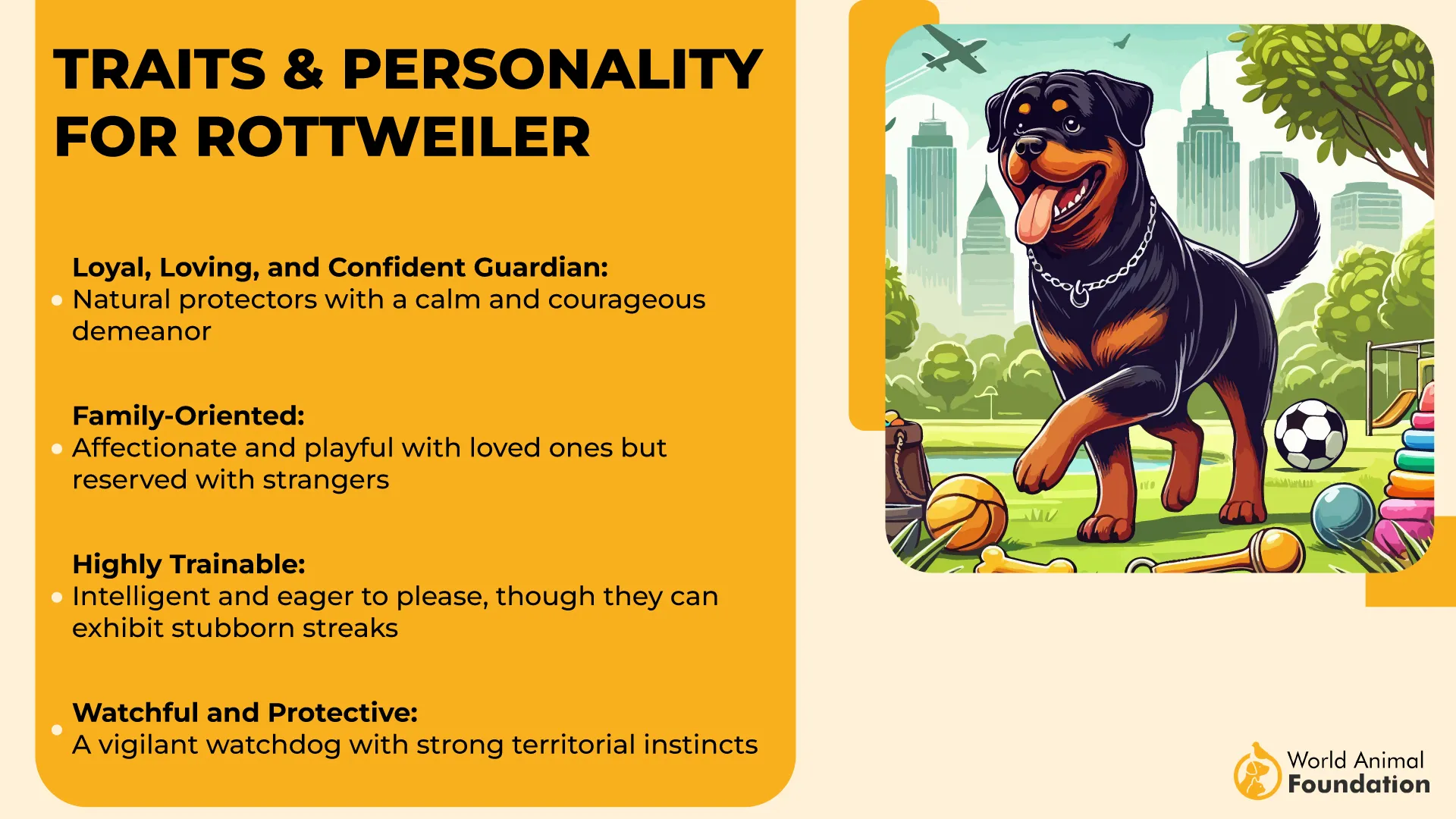
This breed thrives on structure and needs consistent training and socialization from puppyhood. While they’re affectionate with their people, they can be wary of strangers and aren’t always welcoming toward other pets, especially same-sex dogs, states Britannica.
Rottweilers are observant and calm, only reacting when necessary, making them dependable guardians rather than overreactive barkers.
They’re not ideal for first-time dog owners, as they require plenty of attention, exercise, and experienced handling. With the right guidance, a Rottweiler can be both a devoted family member and a formidable protector—brave, watchful, and full of heart.
3. Doberman Pinscher
Graceful, powerful, and endlessly loyal, the Doberman Pinscher is one of the most iconic protection dog breeds in the world. Originally developed in Germany around 1890 by tax collector Karl Friedrich Louis Dobermann, this breed was designed for protection, and it still excels at the job today. With a sleek, muscular frame and commanding presence, Dobermans are built for both high speed and strength.
Males typically weigh between 75 and 100 pounds, standing up to 28 inches tall, while females are slightly smaller. Add in their wedge-shaped head, proud posture, and smooth, athletic stride, and it’s no wonder they’re often referred to as the “noblemen” of the canine world.
Doberman Pinschers are naturally alert and intelligent dogs—often called the “Ferraris of the dog world.” With lean muscle and impressive agility, they can reach speeds up to 30 mph. Their bite force clocks in around 305 PSI, making them a true force when needed.

Yet, it’s their brains that really shine. Ranked the 5th smartest breed by canine researcher Dr. Stanley Coren, Dobermans are quick learners with strong instincts for protection, obedience, and tracking.
AKC states Dobermans are also deeply affectionate. They often bond strongly with one person but remain devoted to their entire family. They’re known for having an uncanny sense of character and will usually keep a watchful eye on strangers. Socialization is important to avoid over-cautious or reactive behaviour, especially with their protective instincts running high.
Dobermans need space to move and thrive with regular exercise. Though they can be intimidating to outsiders, their families know the soft side beneath the sleek exterior. With the proper training and the right environment, Dobermans are exceptional companions—both fearless protectors and loyal, loving members of the household.
4. Bullmastiff
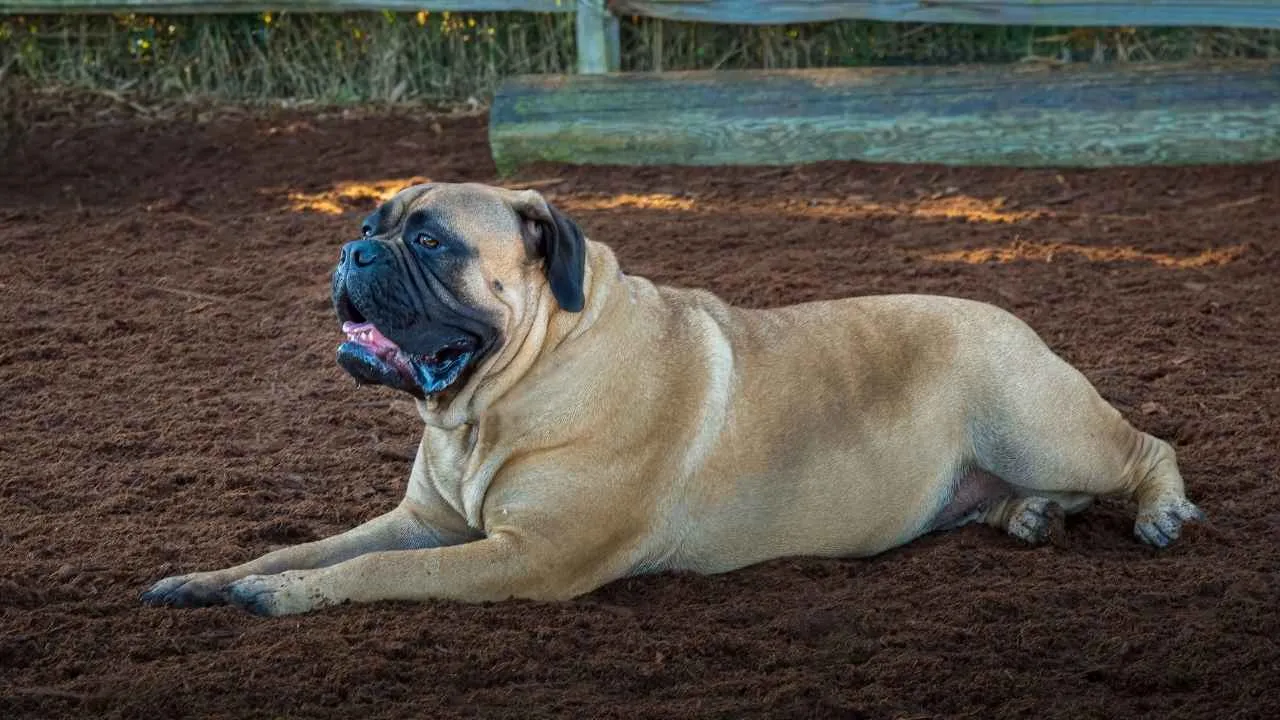
Loyal, affectionate, and powerfully built, the Bullmastiff is a breed that combines strength with sensitivity. Originally developed in 19th-century England by crossing Bulldogs with Mastiffs, these dogs were created to guard estates from poachers. Their original nickname, the “Gamekeeper’s Night Dog,” reflects their roots as reliable nighttime protectors.
Weighing between 100 and 130 pounds and standing 24 to 27 inches tall, Bullmastiffs have an impressive, muscular build. With a broad head, dark expressive eyes, and a short, dense coat in fawn, red, or brindle, they’re both striking and stately.
Despite their formidable appearance, they’re known for being deeply devoted to their families, especially children, and tend to be affectionate and calm at home.
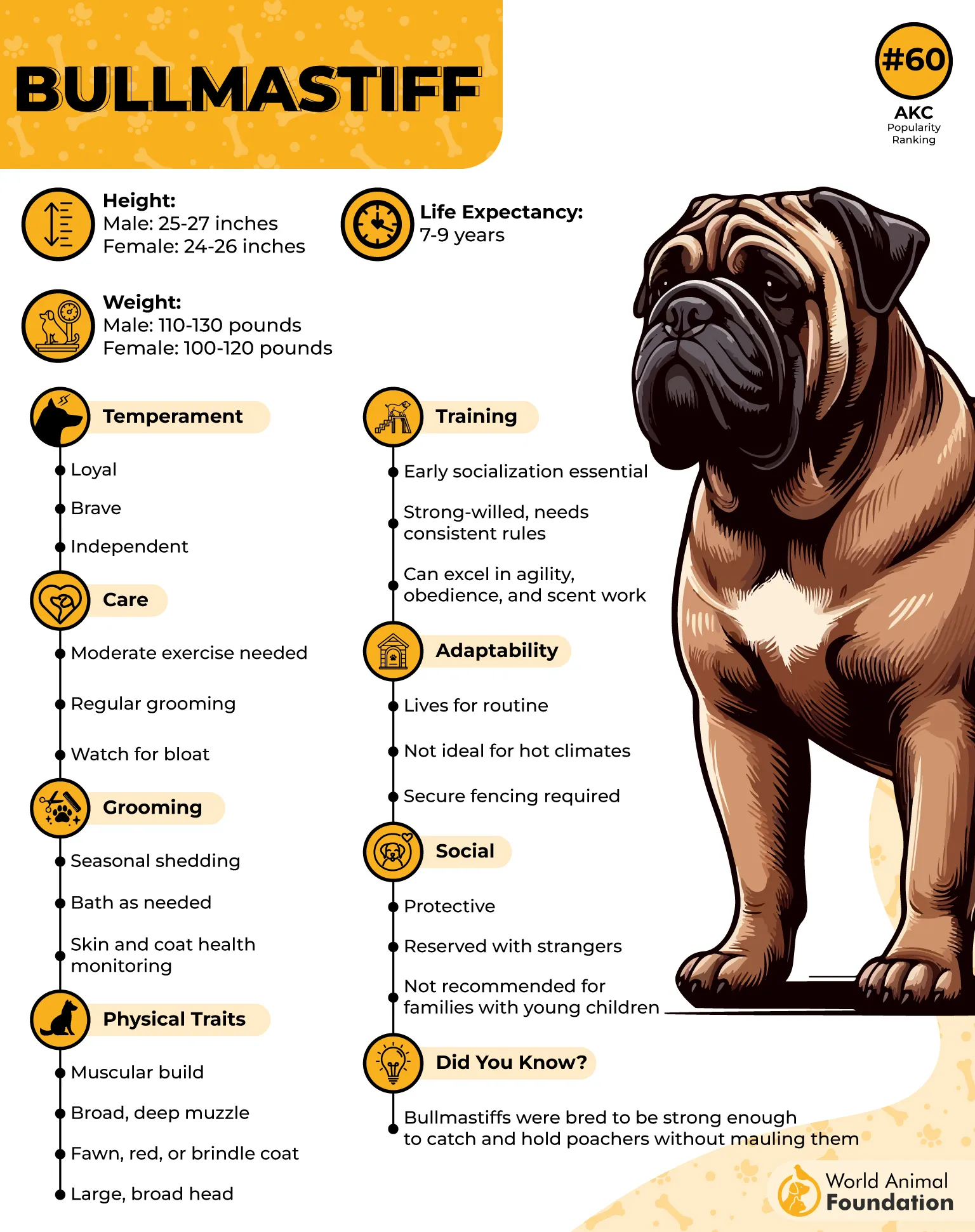
What sets the Bullmastiff apart as a good protection dog is its unique balance of restraint and readiness. Rather than barking excessively or acting aggressively, this breed is quiet and observant. They typically act only when necessary, using their massive size and strength to deter or subdue intruders without going overboard, states Purina.
While their protective instincts are strong, early socialization is key. Bullmastiffs don’t naturally warm up to strangers, and they rely heavily on cues from their trusted humans. Visitors not properly introduced will likely meet a wall of resistance. For this reason—and because of their sheer strength and independent streak—they’re best suited for experienced dog owners.
With their keen awareness, calm temperament, and unwavering loyalty, Bullmastiffs are natural home guardians. But more than that, they’re gentle giants who love being close to their people, offering both security and companionship in one majestic package.
5. American Bulldog
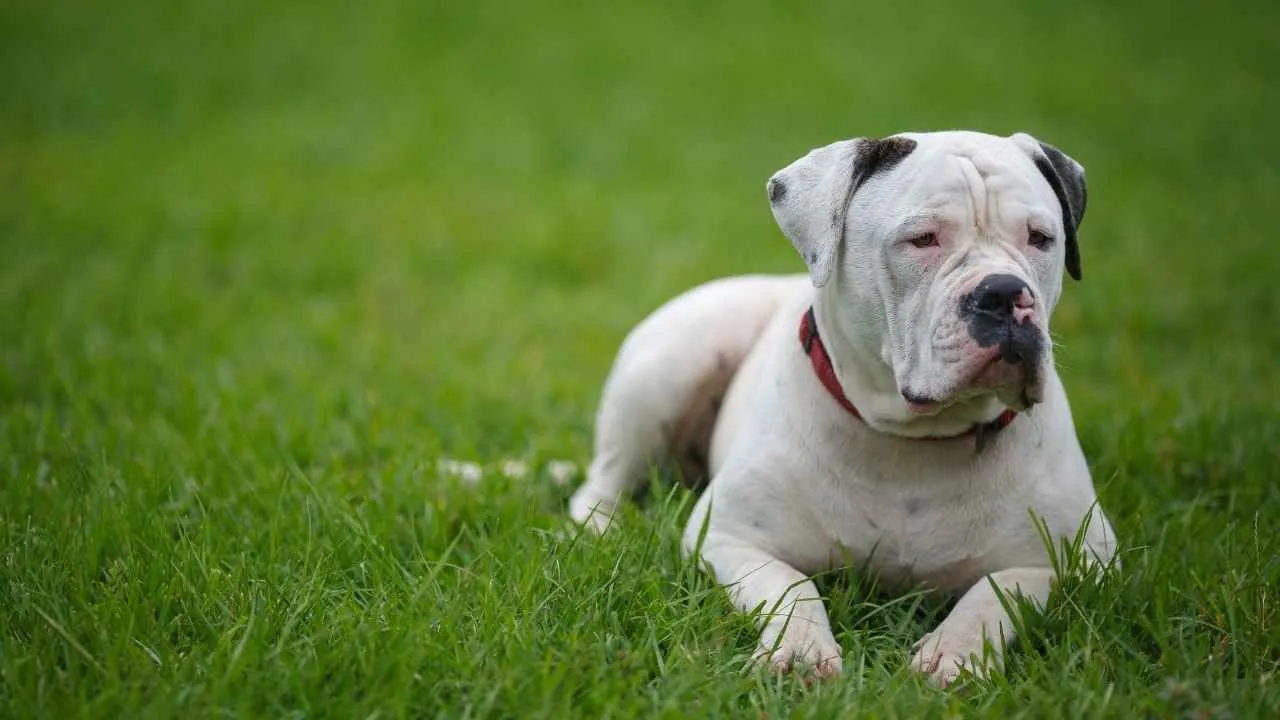
American Bulldogs have worn many hats over the centuries—from cattle herders and farm hands to fiercely loyal protectors and hunting companions. Though they’ve been in the U.S. since the 17th century, their popularity surged in the late 1980s. These muscular, medium-to-large dogs typically stand around 2 feet tall and weigh between 60 to 100 pounds, though some can grow even larger.
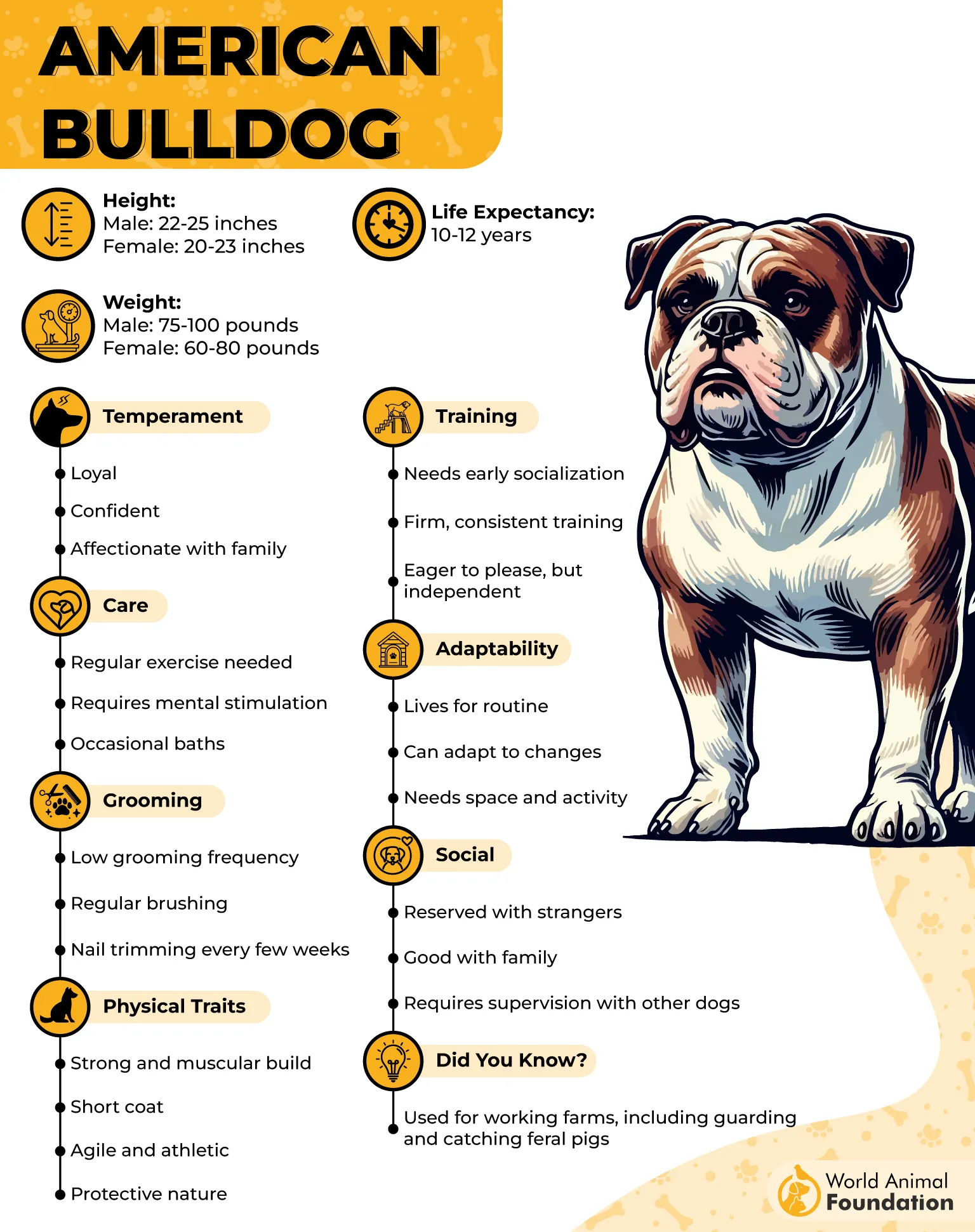
Bred for work, American Bulldogs are courageous, athletic, and naturally protective of their loved ones. These dogs thrive on having a job to do and need regular physical activity and mental stimulation to stay happy. While not the most eager-to-please breed, they respond well to consistent, reward-based training, especially when started young.
Despite their tough exterior, American Bulldogs are affectionate, family-oriented pets. They’re known to bond closely with their humans, including children, and are generally friendly once they’ve had time to warm up to new people. Early socialization is key to helping them grow into well-rounded adult dogs.
These dogs have short, low-shedding coats that are typically white with patches of darker colors across the body. Their large heads, strong jaws, and stocky builds give them a powerful stance, but their loyal, gentle hearts make them wonderful companions.
Just be ready to commit—American Bulldogs need plenty of time, training, and love to thrive as the protective yet playful family members they’re meant to be.
6. Dogo Argentino
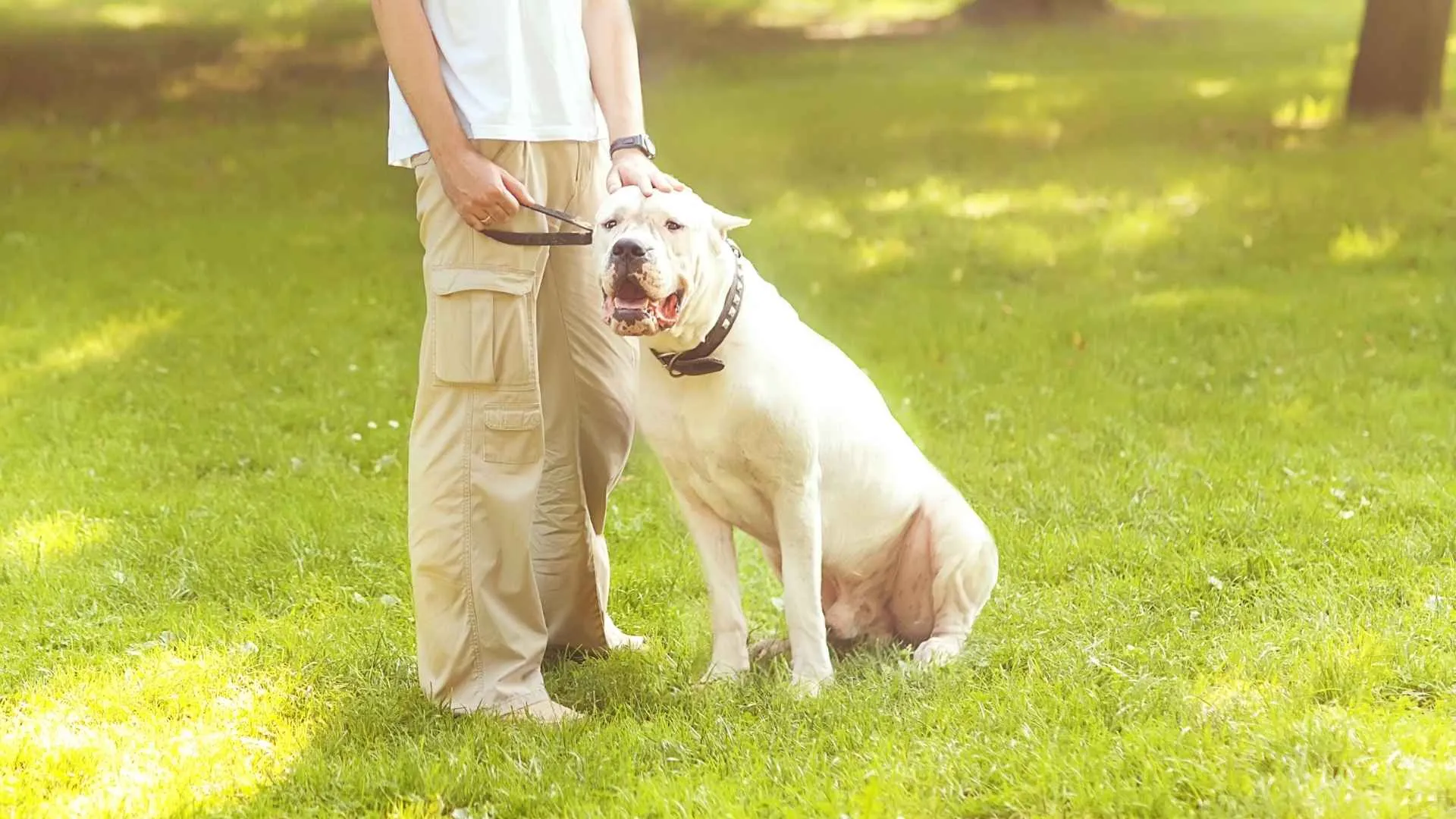
The Dogo Argentino is a large and powerful breed known for its muscular frame, smooth white coat, and intense loyalty. Standing 24 to 27 inches tall and weighing between 80 to 100 pounds, this athletic dog was originally bred in Argentina for big-game hunting, including wild boar and mountain lions.
With a broad head, strong jaw, and traditionally cropped ears to prevent injury in the field, the Dogo carries an imposing aura yet remains elegant and agile.
Originally developed in the 1920s by Argentinian physicians Antonio and Agustín Nores Martinez, the breed combined the now-extinct Córdoba Fighting Dog with various other breeds to create a reliable, courageous, and athletic hunting partner.
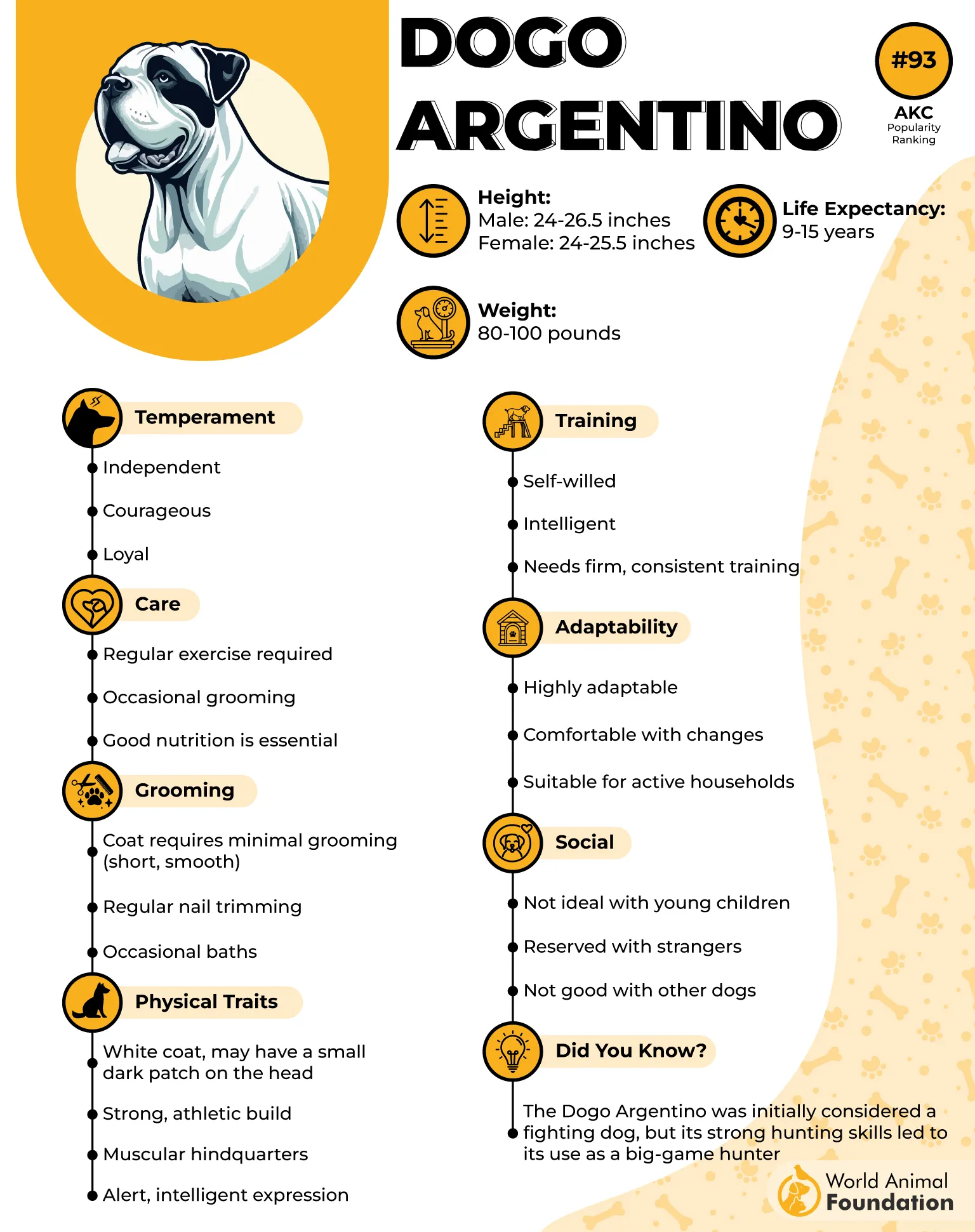
Despite their serious and sometimes intimidating appearance, Dogo Argentinos can be incredibly affectionate and devoted companions. They form strong bonds with their families and are naturally protective, making them excellent guard dogs.
However, their protective instincts and background in hunting and fighting mean they’re best suited to experienced owners who can provide firm leadership, consistent training, and early socialization. Without this, their strength and drive can become challenging to manage.
Dogos thrive in active households where they can burn off their high energy levels through outdoor adventures and mental stimulation. Their short, low-maintenance coat often features a small dark patch near one eye—called a pirata—that adds to their unique look.
While loving with family, they can be wary of strangers and unfamiliar dogs, so careful introduction and controlled environments are key.
Because of their reputation and potential for aggression when poorly handled, Dogo Argentinos are banned or restricted in some countries. But in the right hands—with training, respect, and a job to do—they can be gentle, loving, and incredibly loyal companions.
7. Belgian Malinois
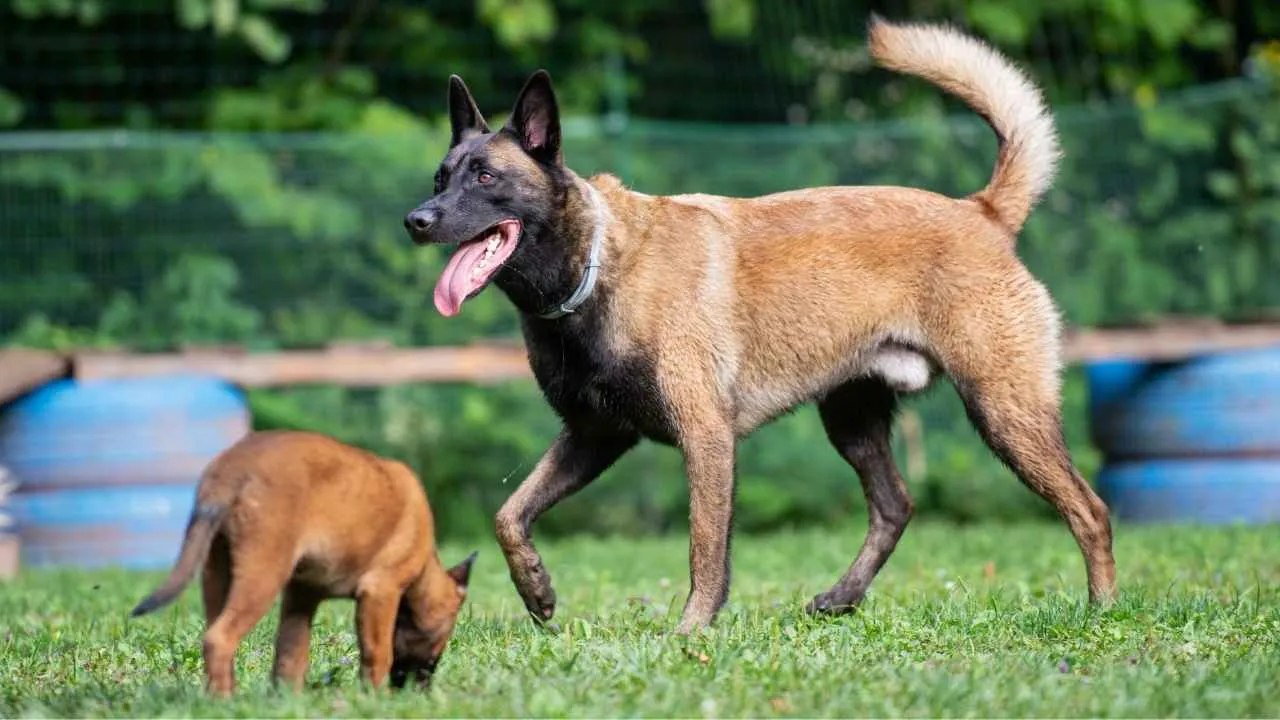
The Belgian Malinois is often compared to the German Shepherd but stands apart with its lighter build, superior agility, and higher energy levels. Weighing around 80 pounds, this breed is easier to manage indoors while still packing impressive speed, running up to 30 mph, and a strong bite force of 195 to 230 PSI.
As noted by Britannica, their exceptional intelligence and quick responsiveness make them top choices for military and police forces, including search and rescue, bomb detection, and personal protection. Notably, U.S. Navy SEALs have trained Belgian Malinois for special operations, with one even joining SEAL Team 6 on the mission to capture Osama bin Laden.
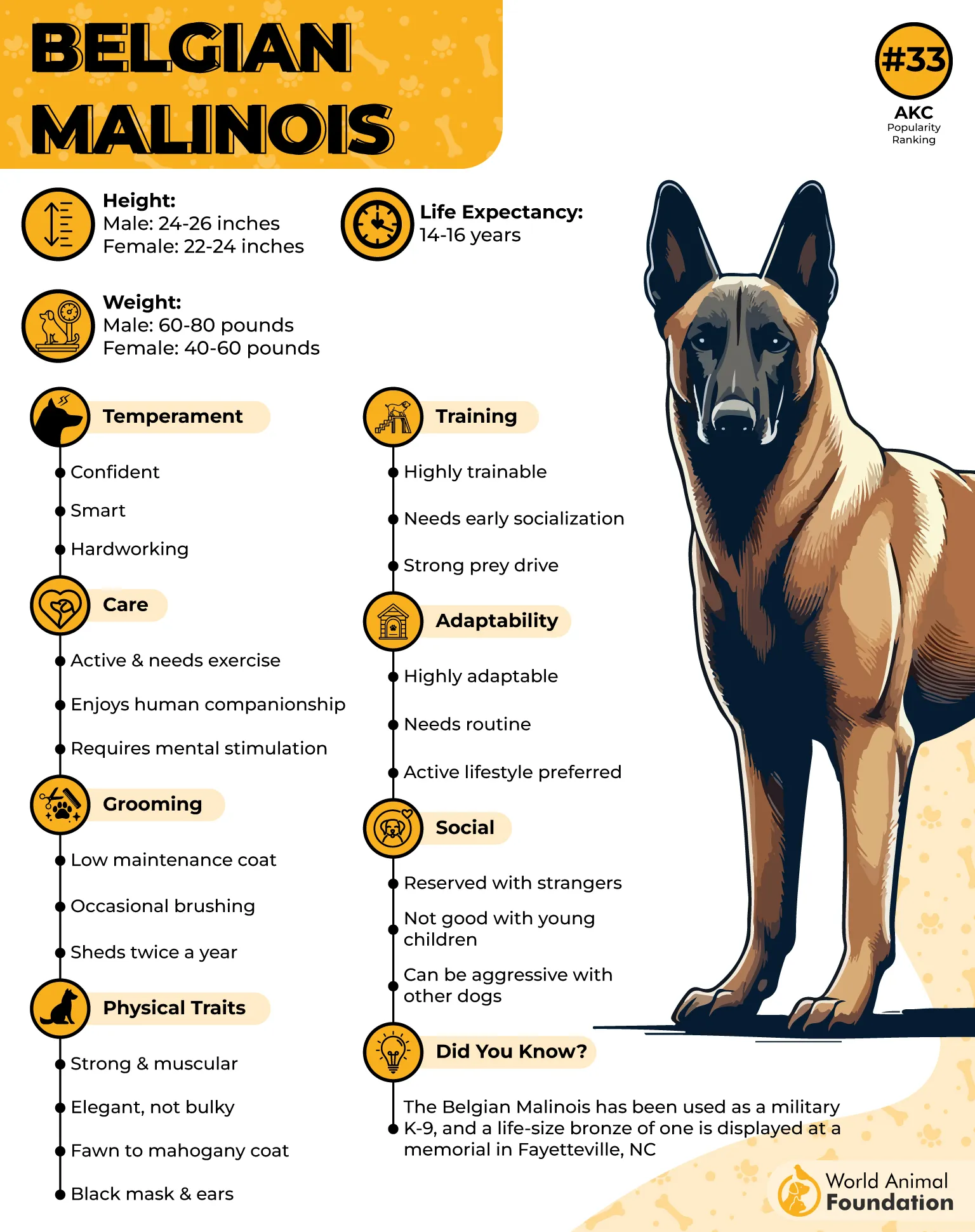
Belgian Malinois thrive in active, high-energy environments. They need owners who can provide rigorous daily exercise, mental challenges, and consistent training. Without this, they can become destructive or stubborn, especially when young.
Activities like agility, herding, dock diving, and protection sports such as Schutzhund and French Ring keep their minds and bodies sharp. Their loyalty and strong bond with handlers make them exceptional working partners and devoted family members.
While Belgian Malinois generally get along with other pets, they can be wary of strangers and may show aggression toward unfamiliar dogs. Due to their protective nature and strength, they aren’t ideal for households with small children or seniors unless carefully managed.
They also require spacious living conditions and plenty of company, making them unsuitable for apartment life or first-time dog owners. Proper socialization and firm, experienced handling are key to raising a well-balanced Belgian Malinois.
Conclusion
Muscular guard dog breeds are more than just strong, broad-chested protectors—they’re brave dogs with calm confidence and a deep sense of loyalty. From Rottweilers to the American Staffordshire Terrier, these powerful yet affectionate companions form close bonds with their families while standing ready to protect property and loved ones.
Whether serving as police dogs, helping herd cattle, or simply being the best friend by your side, these big dogs blend physical strength with a gentle nature that makes them excellent watchdogs. With the right training and care, these muscular dogs aren’t just the best guard dogs—they’re also some of the most loving companions you’ll ever have.


